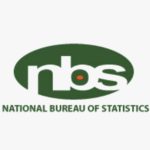Nigeria’s public debt stock surged to N134.3 trillion ($91.3 billion) by the end of the second quarter of 2024.
This was an increase of 10.35% from the N121.7 trillion ($91.5 billion) recorded in the first quarter and announced by the Debt Management Office (DMO).
According to an official document from the Ministry of Finance exclusively obtained by Nairametrics, the increase, mainly driven by the devaluation of the naira, highlights ongoing challenges related to exchange rate volatility.
The document read: “In Q2 2024, the debt stock grew in naira terms to N134.3 trillion ($91.3 billion) from N121.7 trillion ($91.5 billion) in Q1 2024, driven mainly by exchange rate devaluation. The dollar amount of debt was roughly the same.”
Notably, while the total debt grew in naira terms, the dollar equivalent of the debt remained relatively stable, underlining the impact of currency movements on debt valuation.
Domestic debt accounts for 53% of total debt
Nigeria’s domestic and external debt portfolios reveal strategic borrowing trends, with domestic debt continuing to dominate the public debt landscape in Q2 2024.
Domestic debt accounted for 53% of the total, amounting to N71.2 trillion ($48.4 billion), while external debt made up 47%, equivalent to N63.1 trillion ($42.9 billion).
The data further shows a rising trend in the country’s debt-to-GDP ratio, which continues to escalate to over 50%, raising concerns over fiscal sustainability.
FGN bonds dominate 78% of domestic debt
FGN Bonds constituted a significant 78% of domestic debt, highlighting the government’s reliance on local bond markets.
Other instruments in the domestic market include Nigerian Treasury Bills, Savings Bonds, Sukuk, Promissory Notes, and Green Bonds, reflecting diverse borrowing options for public financing.
On the external front, multilateral loans accounted for the largest portion, making up 50.4% of external debt, demonstrating Nigeria’s preference for loans from international financial institutions like the World Bank and the African Development Bank (AfDB).
- Bilateral loans followed with a 13.7% share, while commercial loans comprised 35.9% of the total external debt.
- These figures highlight the balance between concessional financing and market-based borrowing, which enables Nigeria to manage debt obligations while navigating global financial markets.
- The trend suggests that while Nigeria continues to rely heavily on domestic borrowing to finance its budget and infrastructure needs, it maintains a diversified external debt portfolio.
- However, the growing share of external multilateral and commercial loans emphasizes the importance of sustainable debt management, especially in light of exchange rate volatility.
Nairametrics












